Advertisements
Chapters
![NCERT solutions for Mathematics [English] Class 7 chapter 5 - Lines and Angles NCERT solutions for Mathematics [English] Class 7 chapter 5 - Lines and Angles - Shaalaa.com](/images/mathematics-english-class-7_6:c3cebe068a194d94b26c11e5078e5928.jpg)
Advertisements
Solutions for Chapter 5: Lines and Angles
Below listed, you can find solutions for Chapter 5 of CBSE NCERT for Mathematics [English] Class 7.
NCERT solutions for Mathematics [English] Class 7 5 Lines and Angles EXERCISE 5.1 [Pages 78 - 79]
Find the complement of the following angle:
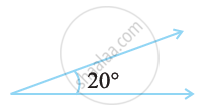
Find the complement of the following angle:

Find the complement of the following angle:
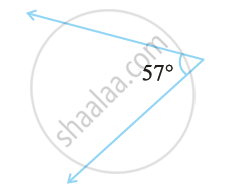
Find the supplement of the following angle:
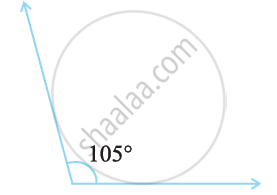
Find the supplement of the following angle:
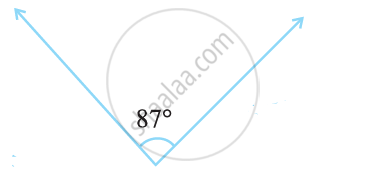
Find the supplement of the following angle:
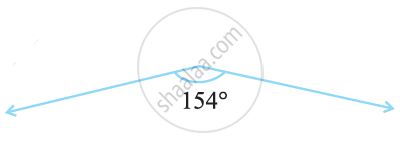
Identify the given pair of angles are complementary or supplementary.
65°, 115°
Identify the given pair of angles are complementary or supplementary.
63°, 27°
Identify the given pair of angles are complementary or supplementary.
112°, 68°
Identify the given pair of angles are complementary or supplementary.
130°, 50°
Identify the given pair of angles are complementary or supplementary.
45°, 45°
Identify the given pair of angles are complementary or supplementary.
80°, 10°
Find the angle which is equal to its complement.
Find the angle which is equal to its supplement.
In the given figure, ∠1 and ∠2 are supplementary angles.
If ∠1 is decreased, what changes should take place in ∠2 so that both the angles still remain supplementary.
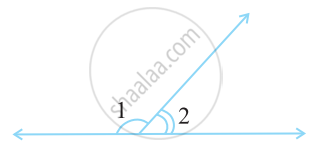
Can two angles be supplementary if both of them are acute?
Can two angles be supplementary if both of them are obtuse?
Can two angles be supplementary if both of them are right?
An angle is greater than 45°. Is its complementary angle greater than 45° or equal to 45° or less than 45°?
Fill in the blanks:
If two angles are complementary, then the sum of their measures is _______.
If two angles are supplementary, then the sum of their measures is _______.
If two adjacent angles are supplementary, they form a _______.
In the adjoining figure, name the following pairs of angles.
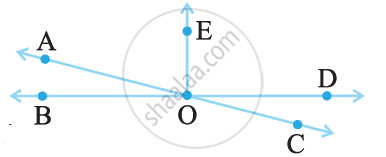
- Obtuse vertically opposite angles
- Adjacent complementary angles
- Equal supplementary angles
- Unequal supplementary angles
- Adjacent angles that do not form a linear pair
NCERT solutions for Mathematics [English] Class 7 5 Lines and Angles EXERCISE 5.2 [Pages 86 - 87]
State the property that is used in each of the following statements?
- If a || b, then ∠1 = ∠5.
- If ∠4 = ∠6, then a || b.
- If ∠4 + ∠5 = 180°, then a || b.
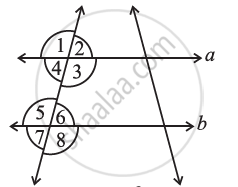
In the adjoining figure, identify:
- The pairs of corresponding angles.
- The pairs of alternate interior angles.
- The pairs of interior angles on the same side of the transversal.
- The vertically opposite angles.
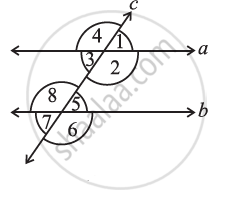
In the adjoining figure, p || q. Find the unknown angles.
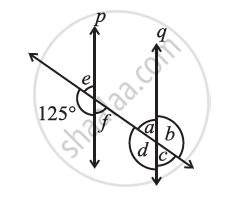
Find the value of x in the following figures if l || m.
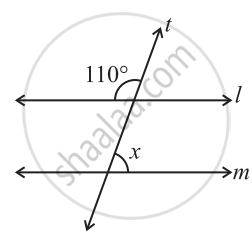
Find the value of x in the following figure if l || m.
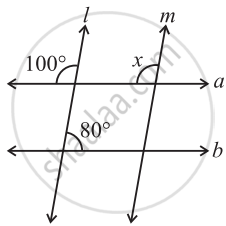
In the given figure, the arms of two angles are parallel.
If ∠ABC = 70°, then find
- ∠DGC
- ∠DEF
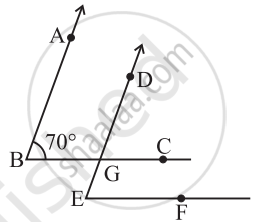
In the given figure below, decide whether l is parallel to m.
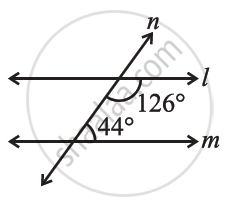
In the given figure below, decide whether l is parallel to m.

In the given figure below, decide whether l is parallel to m.
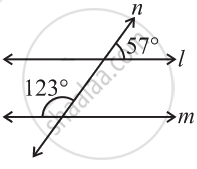
In the given figure below, decide whether l is parallel to m.

Solutions for 5: Lines and Angles
![NCERT solutions for Mathematics [English] Class 7 chapter 5 - Lines and Angles NCERT solutions for Mathematics [English] Class 7 chapter 5 - Lines and Angles - Shaalaa.com](/images/mathematics-english-class-7_6:c3cebe068a194d94b26c11e5078e5928.jpg)
NCERT solutions for Mathematics [English] Class 7 chapter 5 - Lines and Angles
Shaalaa.com has the CBSE Mathematics Mathematics [English] Class 7 CBSE solutions in a manner that help students grasp basic concepts better and faster. The detailed, step-by-step solutions will help you understand the concepts better and clarify any confusion. NCERT solutions for Mathematics Mathematics [English] Class 7 CBSE 5 (Lines and Angles) include all questions with answers and detailed explanations. This will clear students' doubts about questions and improve their application skills while preparing for board exams.
Further, we at Shaalaa.com provide such solutions so students can prepare for written exams. NCERT textbook solutions can be a core help for self-study and provide excellent self-help guidance for students.
Concepts covered in Mathematics [English] Class 7 chapter 5 Lines and Angles are Complementary Angles, Concept of Linear Pair, Concept of Vertically Opposite Angles, Concept of Points, Concept of Line, Concept of Line Segment, Concept of Angle, Supplementary Angles, Concept of Intersecting Lines, Introduction to Parallel Lines, Pairs of Lines - Transversal, Pairs of Lines - Angles Made by a Transversal, Pairs of Lines - Transversal of Parallel Lines, Concept of Angle, Complementary Angles, Concept of Linear Pair, Concept of Vertically Opposite Angles, Concept of Points, Concept of Line, Concept of Line Segment, Concept of Angle, Supplementary Angles, Concept of Intersecting Lines, Introduction to Parallel Lines, Pairs of Lines - Transversal, Pairs of Lines - Angles Made by a Transversal, Pairs of Lines - Transversal of Parallel Lines, Concept of Angle.
Using NCERT Mathematics [English] Class 7 solutions Lines and Angles exercise by students is an easy way to prepare for the exams, as they involve solutions arranged chapter-wise and also page-wise. The questions involved in NCERT Solutions are essential questions that can be asked in the final exam. Maximum CBSE Mathematics [English] Class 7 students prefer NCERT Textbook Solutions to score more in exams.
Get the free view of Chapter 5, Lines and Angles Mathematics [English] Class 7 additional questions for Mathematics Mathematics [English] Class 7 CBSE, and you can use Shaalaa.com to keep it handy for your exam preparation.
